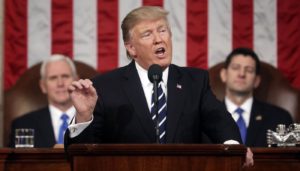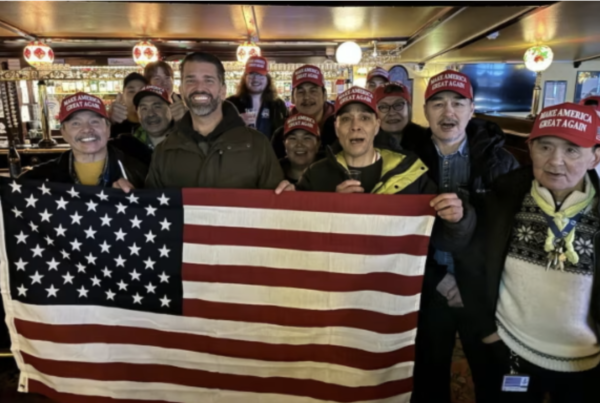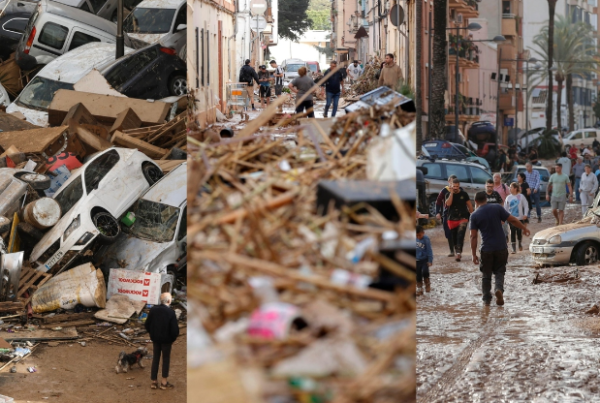By Isabel O’Brien

Photo source: Jim Lo Scalzo // Associated Press
If you, like many others at Sciences Po, are not American, you may be confused as to why there is all this media buzz surrounding something President Donald Trump said that was neither shockingly stupid nor blatantly offensive. On January 30, Trump lost to a Clinton once again, giving the third longest State of the Union Address in modern American history, speaking for a total of 80 minutes (President Bill Clinton spoke for 88 minutes in 2000 and 84 minutes in 1995). While the president makes many — some could argue even too many — speeches throughout his term, the State of the Union requires special attention — and I’m here to explain why.
What is the State of the Union Address?
Those of you from the United Kingdom, the Netherlands, or Norway (or, god forbid, a real monarchy) may better understand the “State of the Union” as the “Speech from the Throne.” While the president (whether he knows it or not) is not a king, his speeches serve the same function — to create cohesion between the executive and legislative branches. This function is even more pronounced in America, where the two branches of government are rigidly separated and are often of different political ideologies. Article II Section 3 of the U.S. Constitution actually outlines the State of the Union address as a power for the president in the system of checks and balances — the power to convene a joint session (of both houses of Congress) and set the agenda for the issues he deems the most important.
The form in which the State of the Union is to be delivered is not clearly defined by the constitution, and thus it has taken on many different shapes since the first speech was given by George Washington in 1790. While Thomas Jefferson preferred to write his through letters and Calvin Coolidge had his broadcasted through the radio, the official State of the Union did not become an annual televised event until the Truman Presidency.
Why should I care?
You may be thinking, “Isabel, if I wanted to see the President brag about his political accomplishments, all I’d have to do is log onto Twitter — what’s the need for a special speech?” While this may be true for the current president, we must keep in mind that not all administrations are so kind as to constantly keep us updated on their “big wins.” Furthermore, while the constitutional intention of the State of the Union was to foster communication between the executive and the legislature, today the State of the Union acts as a liaison between the President and the American people. In his speech, the President has outlined his policy goals for the coming year and reviewed the accomplishments of the year past — proving them by inviting guests that embody “American Excellence.”
So what then exactly is the state of the American Union today, in 2018?
According to President Trump, “The state of our Union is strong because our people are strong”. He corroborated this assertion with an assortment of 15 guests, which included David Dahlberg, a man who saved 62 children from wildfires in California, and Jon Bridgers, who rescued many people during Hurricane Harvey. While the president did not address his administration’s virtual elimination of American environmental protection policy, he did detail his many achievements this past year, which have included the state of the economy, the Republican Tax Bill, the revamping of American manufacturing and coal, the eradication of ISIS, and… well that’s pretty much it. Unless you count the Republicans’ failure to repeal and replace the Affordable Care Act — which Donald Trump did, calling it the elimination of, “… an especially cruel tax… the core of disastrous Obamacare — the individual mandate.”
Trump’s policy plans for 2018 are less surprising but even more numerous. For example, the President’s domestic goals include a bipartisan $1.5 trillion dollar infrastructure revitalization plan, prison reform (paradoxically alongside his insistence to end the reduction of detainees at Guantánamo Bay), and paid family leave, to name a few. He also aims to reach a compromise with Democrats on a new immigration bill. This year, the Republican Party will very generously allow the Dreamers — illegal immigrants brought to the US at a young age — a path to citizenship, in exchange for everything they want. This means a merit-based immigration system, the construction of The Wall, and the end of “chain migration”, when one immigrant brings the rest of their family into the country at a later date.
On the international stage, Trump has taken an even more hard-line stance, with even more restrictive trade deals, a greater nuclear arsenal, the end of concessions to North Korea, and reevaluating aid sent to countries which denounced the US recognition of Jerusalem as the Israeli capital in a UN resolution last month.
If you can stand to listen to Donald Trump’s voice for more than five minutes, I highly recommend you watch the speech on Youtube. Whether or not the President succeeds in his agenda for the next year, we’ll at least have a vague idea of what is to come — and you’ll get to participate in the pomp and circumstance that is American politics.
Other posts that may interest you:
- The Trouble with ‘Ecocide’
- Carbon dioxide removal – hit or miss?
- Local Victories for Turkish Opposition — A Sign of Hope?
- Are France and Japan a Mismatch Made in Heaven?
- A Reflection on Dark Tourism
Discover more from The Sundial Press
Subscribe to get the latest posts sent to your email.





